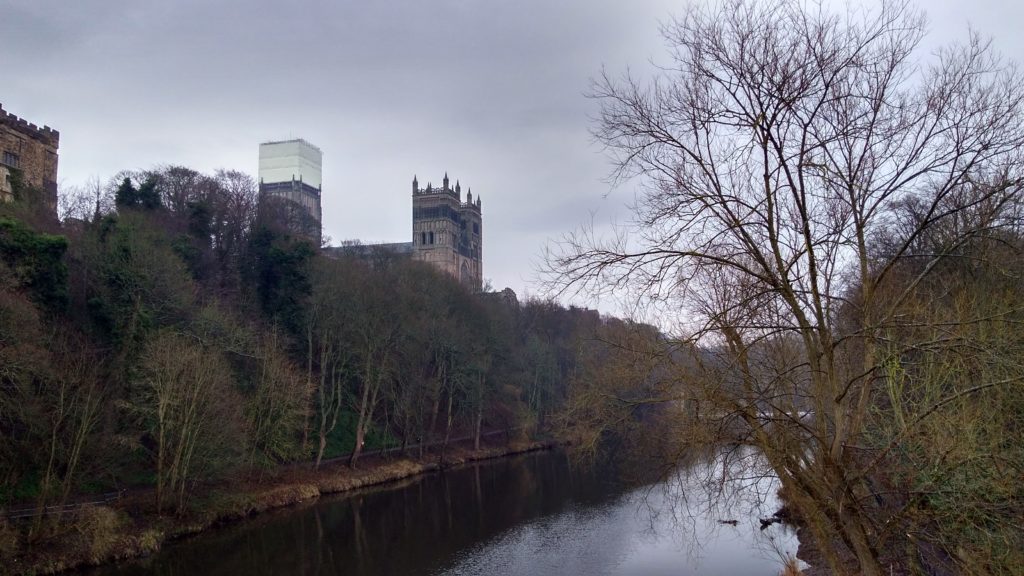
Yesterday, The Wild Hunt‘s Liz Williams covered the story of a reported defacement of the Stoney Littleton Long Barrow, a 5,000 chambered tomb near Bath, England. According to the BBC, the perpetrator daubed handprints onto several places within the barrow; the material appears to be red food dye. “Whilst our specialist team will be working to remove the graffiti,” said Win Scutt, the curator of the property under English Heritage, “there is every chance it might have caused permanent damage to the stonework.”

Interior passage of Stony Littleton Long Barrow [Neil Owen, Wikimedia Commons, CC 2.0]
“My suspicions are that someone has come to the site and placed these red handprints on the stones,” said Matt Bendall, a police constable investigating the incident, “perhaps as a sacrificial offering to the monument but have not really considered the long term effects of doing so.” I feel it incumbent on me to mention here that, as far as I can tell, this is only speculation, and there is nothing to firmly tie this vandalism to any modern Pagan tradition or practice (not that this stopped The Daily Mail from running with a sensationalist angle out of line with the investigator’s quote.)
Still, whenever a story like this appears, it brings to mind some questions I have wrestled with over the years regarding pilgrimage, sacred spaces, and historical sites. The concerns about the ethical use of historic places by Pagans have been raised for years in scholarly circles. Jenny Blain and Robert Wallis, for example, have long studied how modern Pagans construct relationships with ancient sites, including examinations of how modern Pagans can both be harmful to ancient sites through leaving debris and other “ritual litter” and how the Pagan community can be a powerful force for preservation.

Durham Cathedral, overlooking the River Wear. [E. Scott]
One of the major problems I have tried to wrestle with, both in my writing and in my own pilgrimage practices, is how these ancient sites are considered frozen in time, in a way that pilgrimage centers for other religions are not. Look at a building like Durham Cathedral in northern England, for example – while that building is “Romanesque,” its construction spanned centuries, and arguably never really stopped. The towers and the facade are from more than a century after the 1093 date when its construction began; much of the cathedral’s stained glass is from the 20th century, with one window installed just ten years ago. This is to say nothing of things like the addition of electric lighting, or even the routine removal of famous elements of the building like its ornate sanctuary knocker for maintenance. Yet despite all these changes, we are comfortable saying that Durham Cathedral today is the same building as the 12th century, and for the most part, everyone accepts that these alterations have not been “irreparable harm,” but part of the ongoing vitality and evolution of the building and its community.
For Pagan pilgrims, however, there is no similar continuity between the builders of ancient sites and their modern-day visitors; at best we have the conceptualize a major breach between their ancient and modern uses. More pessimistically, we have to characterize the relationship between ancient paganism and modern Paganism at these places as wholly invented. One of the consequences of this is that modern Pagans do not control most of the sites we deem sacred, as other religious communities might; instead the places we venerate tend to belong to the state or private owners, and we interact with them on the owners’ terms.
Those terms tend to include a focus on preserving the sites in a static form. We talk about Stoney Littleton Long Barrow as a neolithic site, but if we think about that for a few moments, we run into trouble. The tomb as we know it today only exists because a farmer uncovered it to loot for stone; what makes it such a fine example of an “accessible” neolithic structure is that it was irreparably vandalized in order to make it accessible. Stoney Littleton is not trapped in amber but continues to exist in the present day.
Now, does that mean it’s good and proper to paint red handprints on these structures? I certainly hope not, for the obvious reason that while one red handprint will likely wash off, a thousand of them likely will not. Similarly, if someone leaves a flower at an ancient site, the flower will eventually vanish back into the earth – but if someone leaves a plastic flower vase, its cracked remnants will stay there. The problem, as I see it, is not that modern visitors make use of these sites, or even that there might be alterations made to them to accommodate modern use; it’s the stubborn vanity of individual whimsy when deciding to make those alterations.
If we, as a community, are to continue mixing our modern practice with these ancient sites, we have to accept that we will do so under the confines of their ownership and historical management. This is not necessarily a bad thing, and many Pagan groups have developed healthy relationships with historians, archeologists, and conservators. But it does mean that any alterations to these living sites must be done deliberately and cooperatively. Whoever left these handprints on the walls of Stoney Littleton decided that their personal desire to alter the site overrode the desires of everyone else who has a stake in its future.
That selfishness is – please forgive me – the issue at hand.
The Wild Hunt is not responsible for links to external content.
To join a conversation on this post:
Visit our The Wild Hunt subreddit! Point your favorite browser to https://www.reddit.com/r/The_Wild_Hunt_News/, then click “JOIN”. Make sure to click the bell, too, to be notified of new articles posted to our subreddit.
